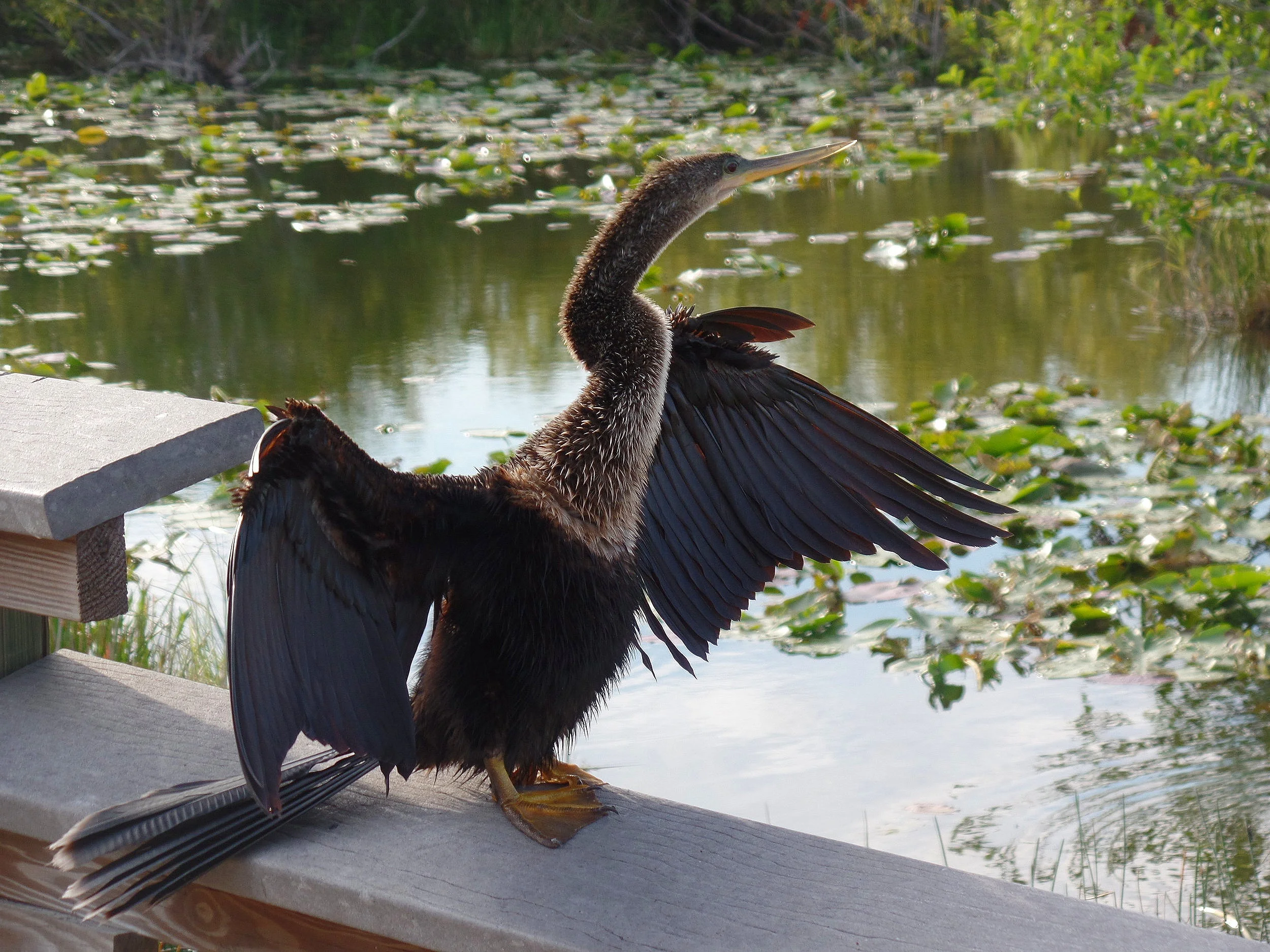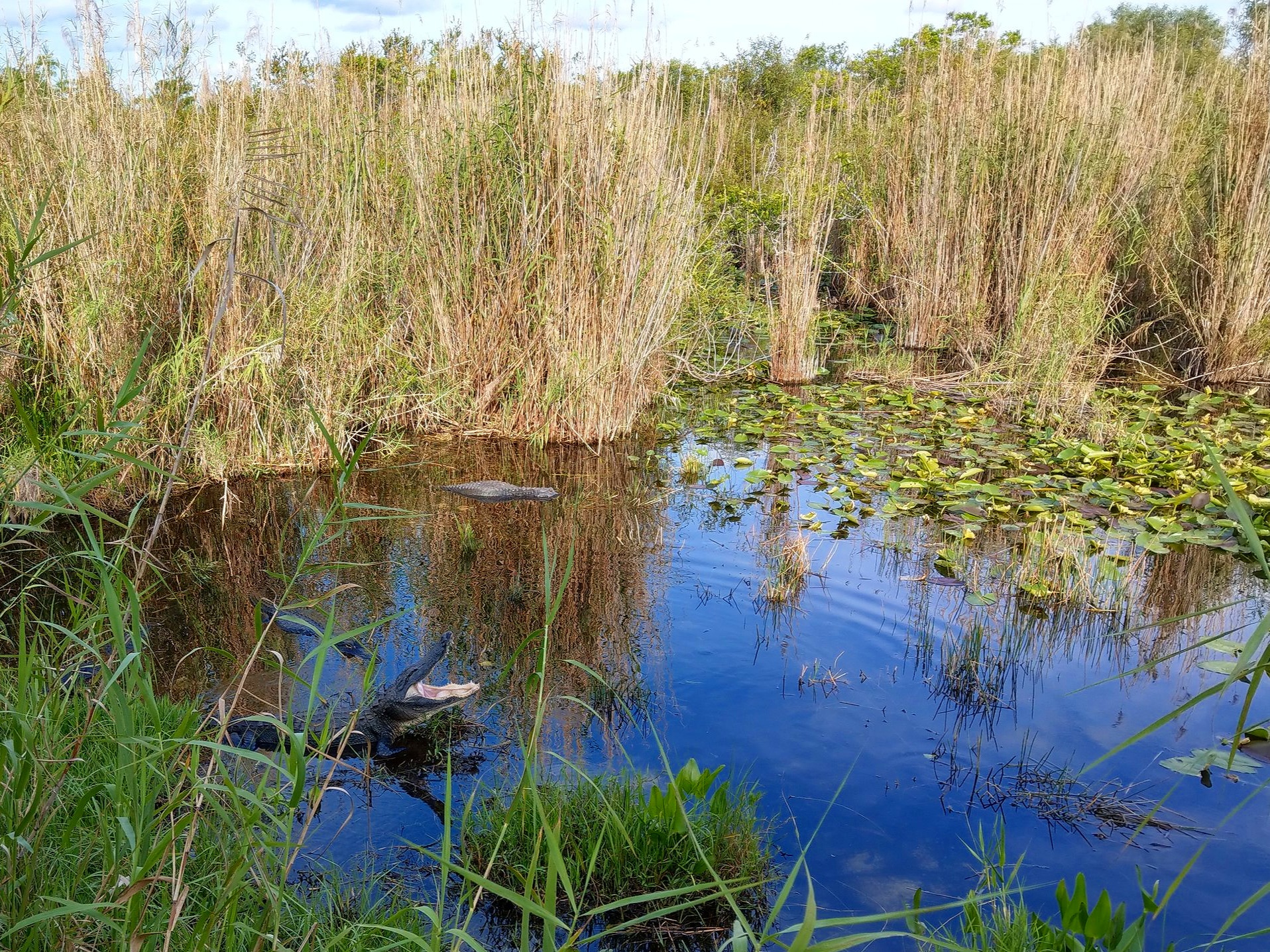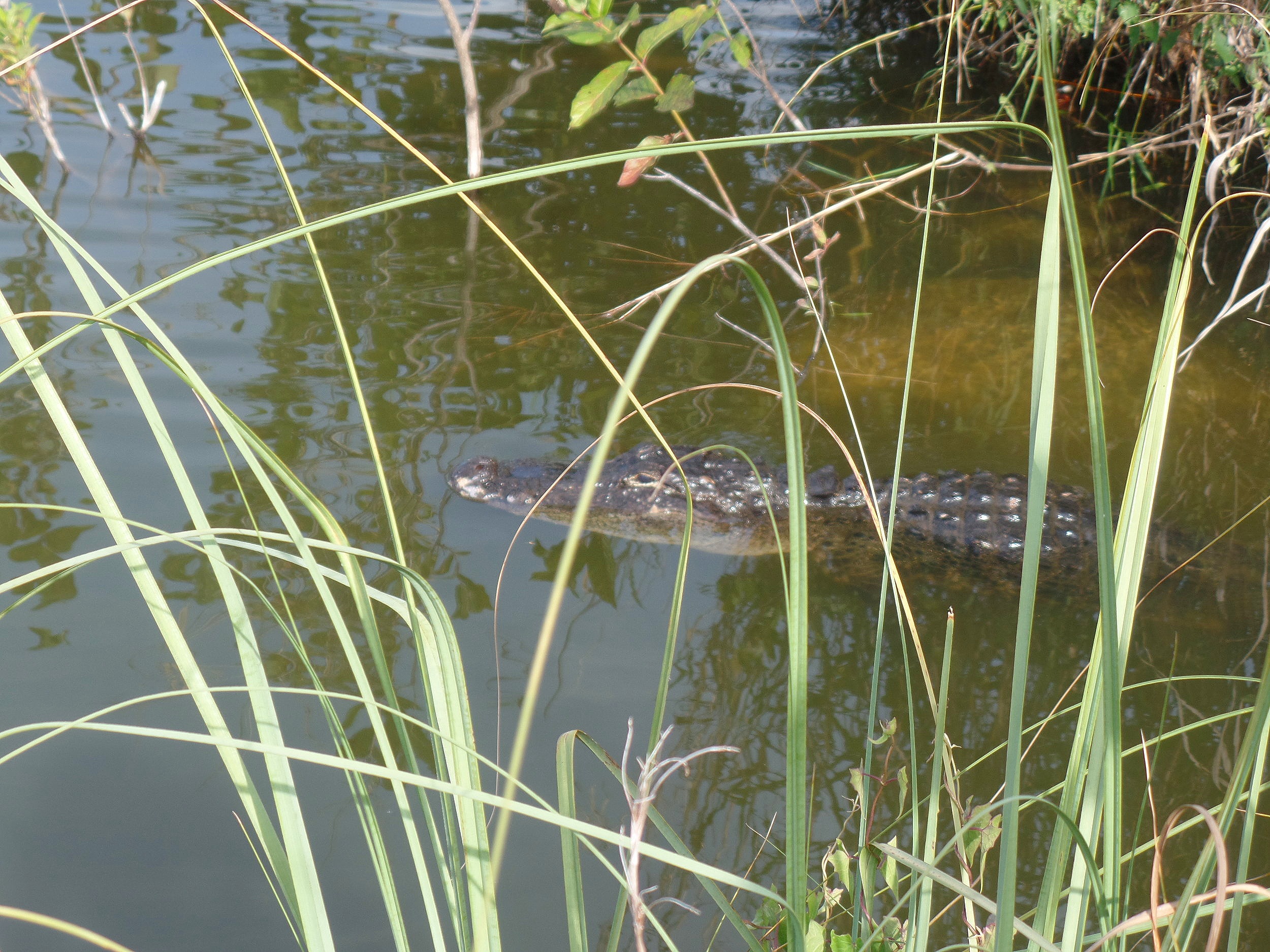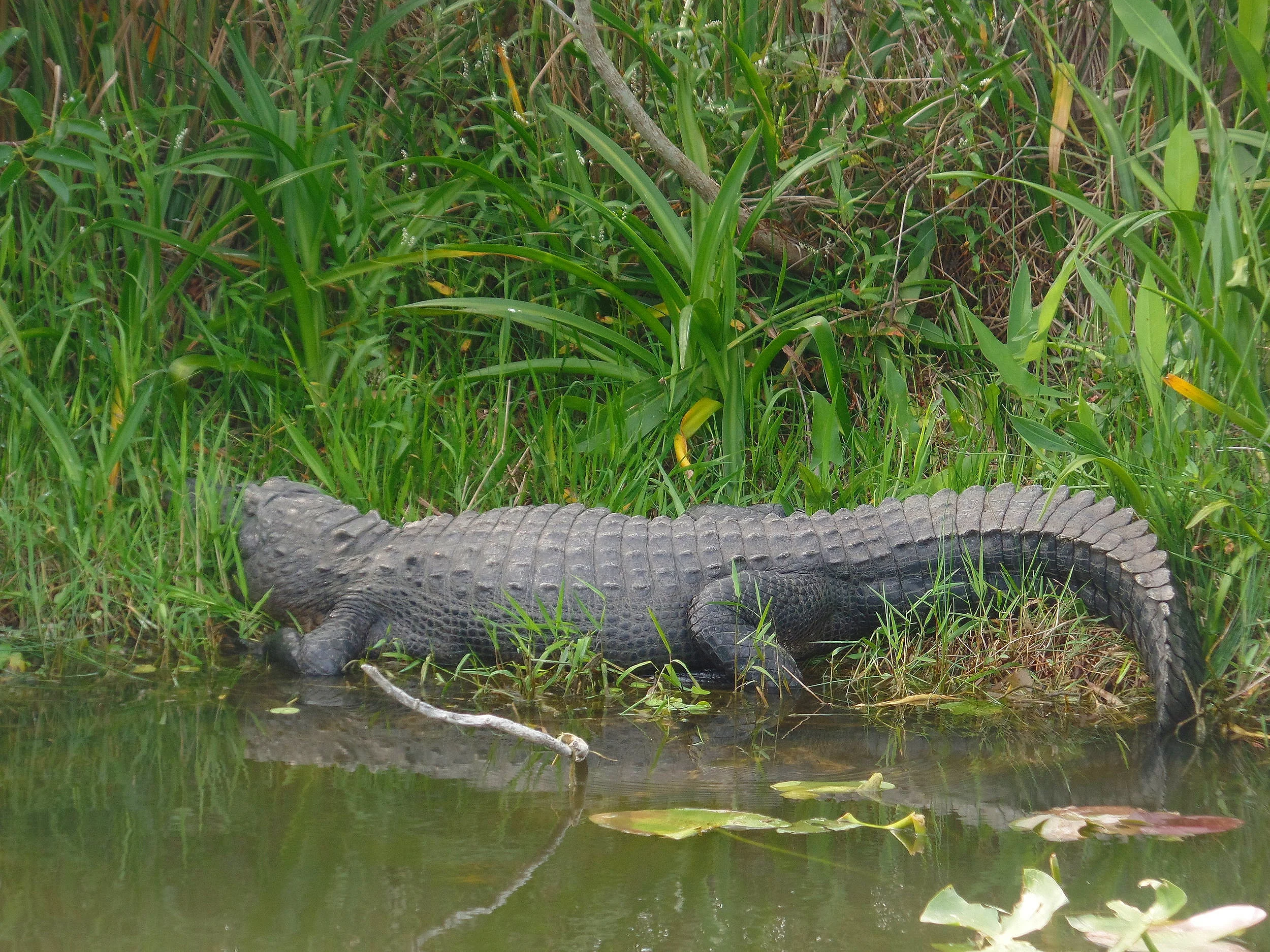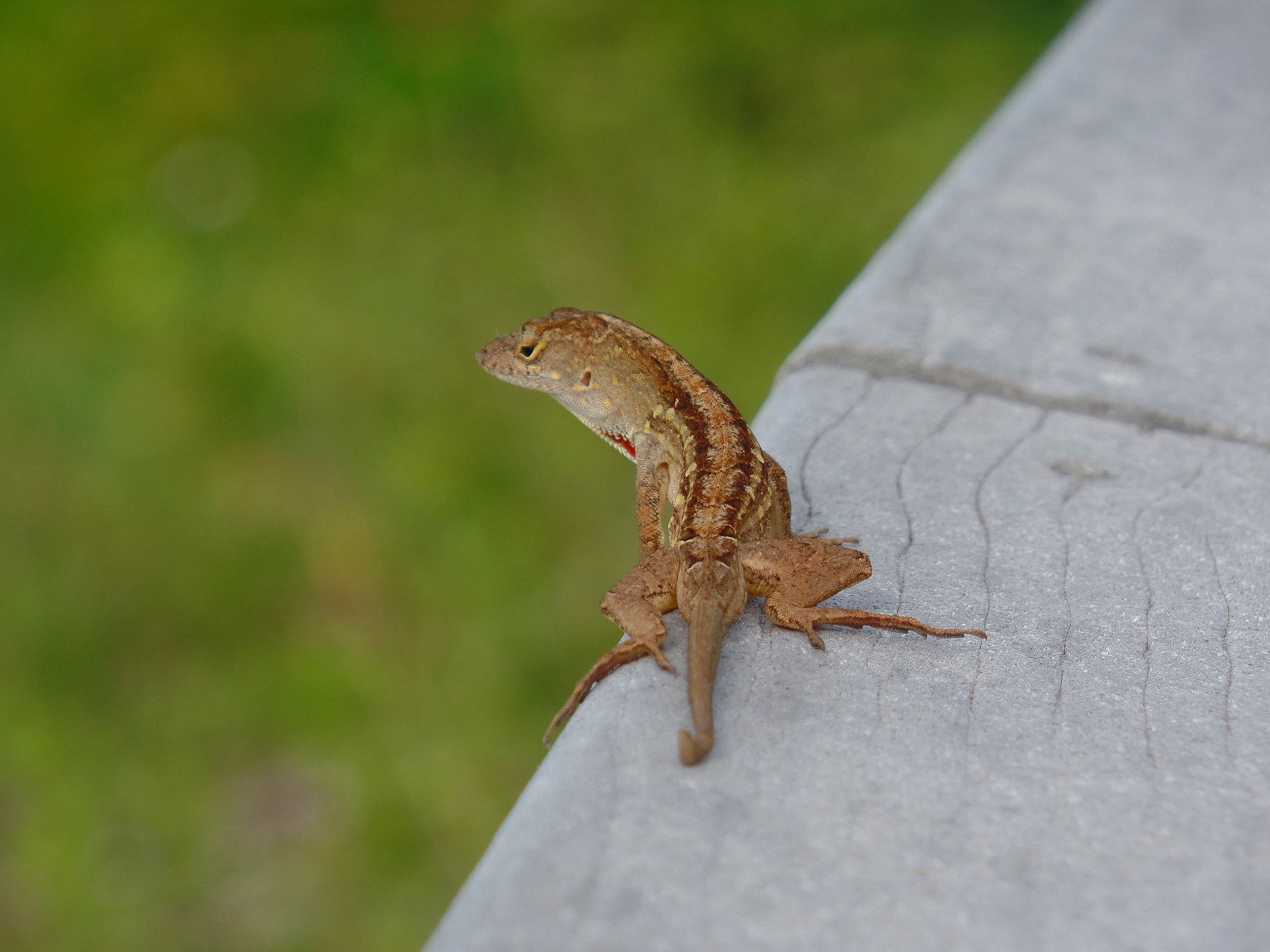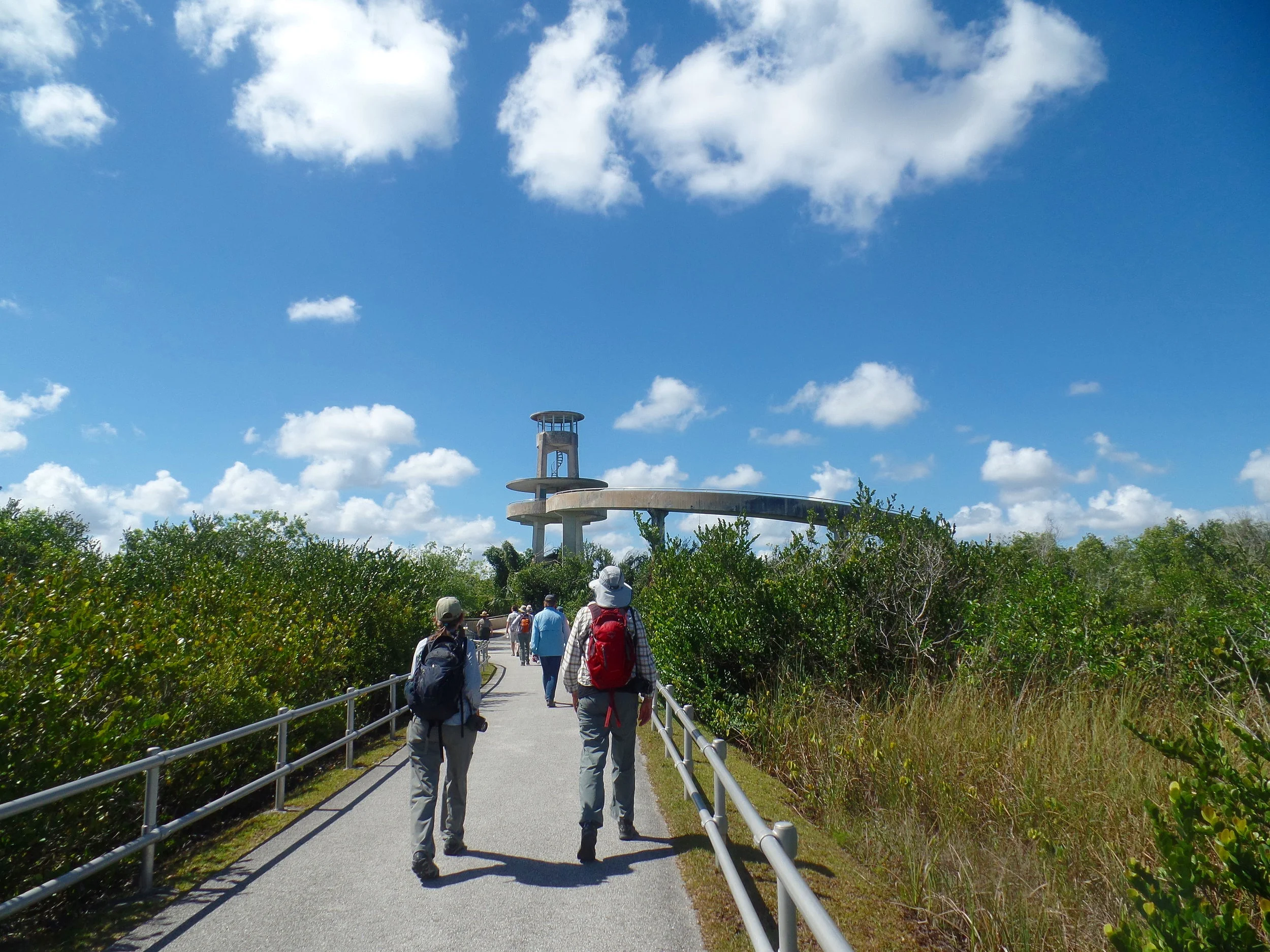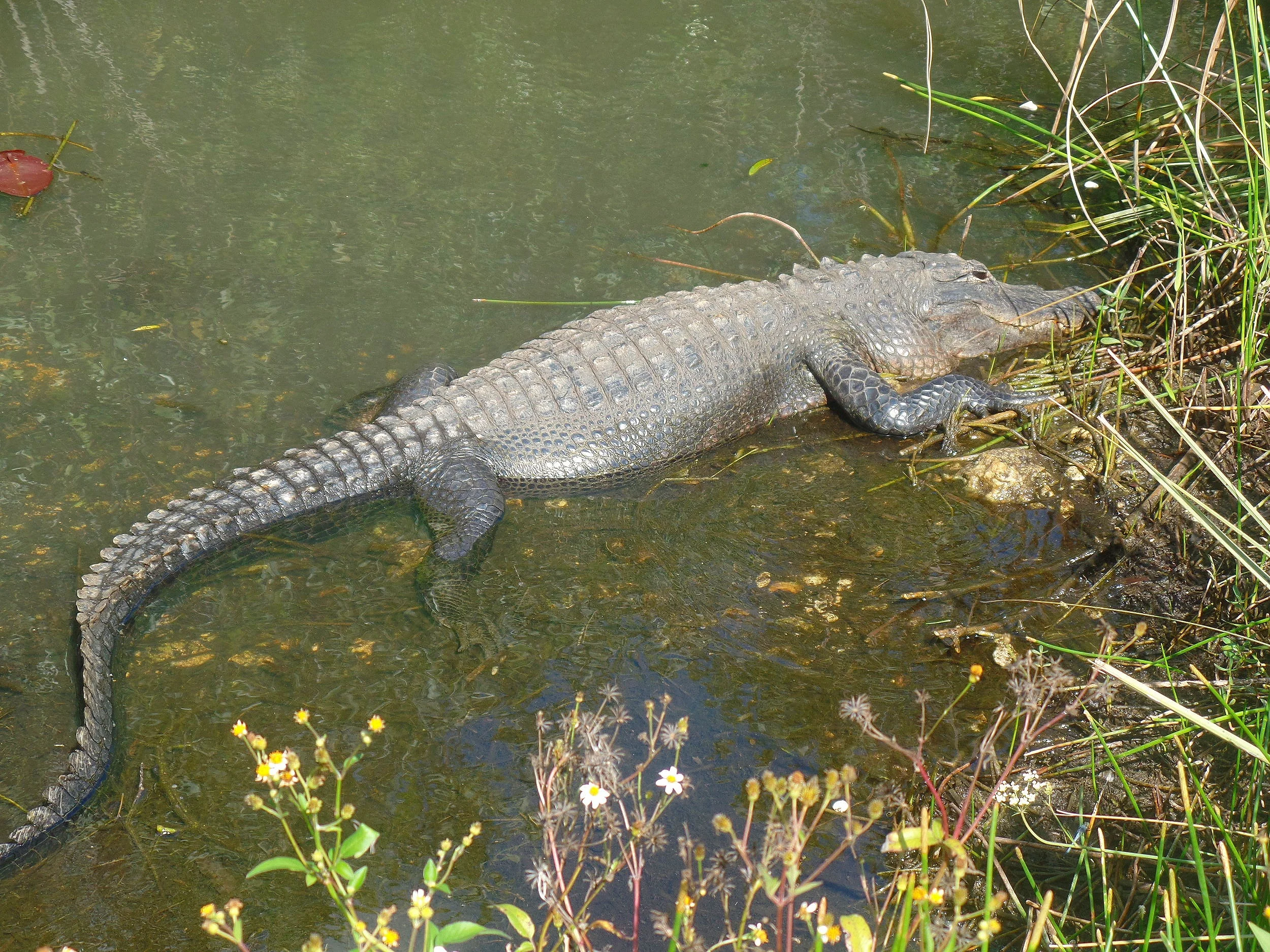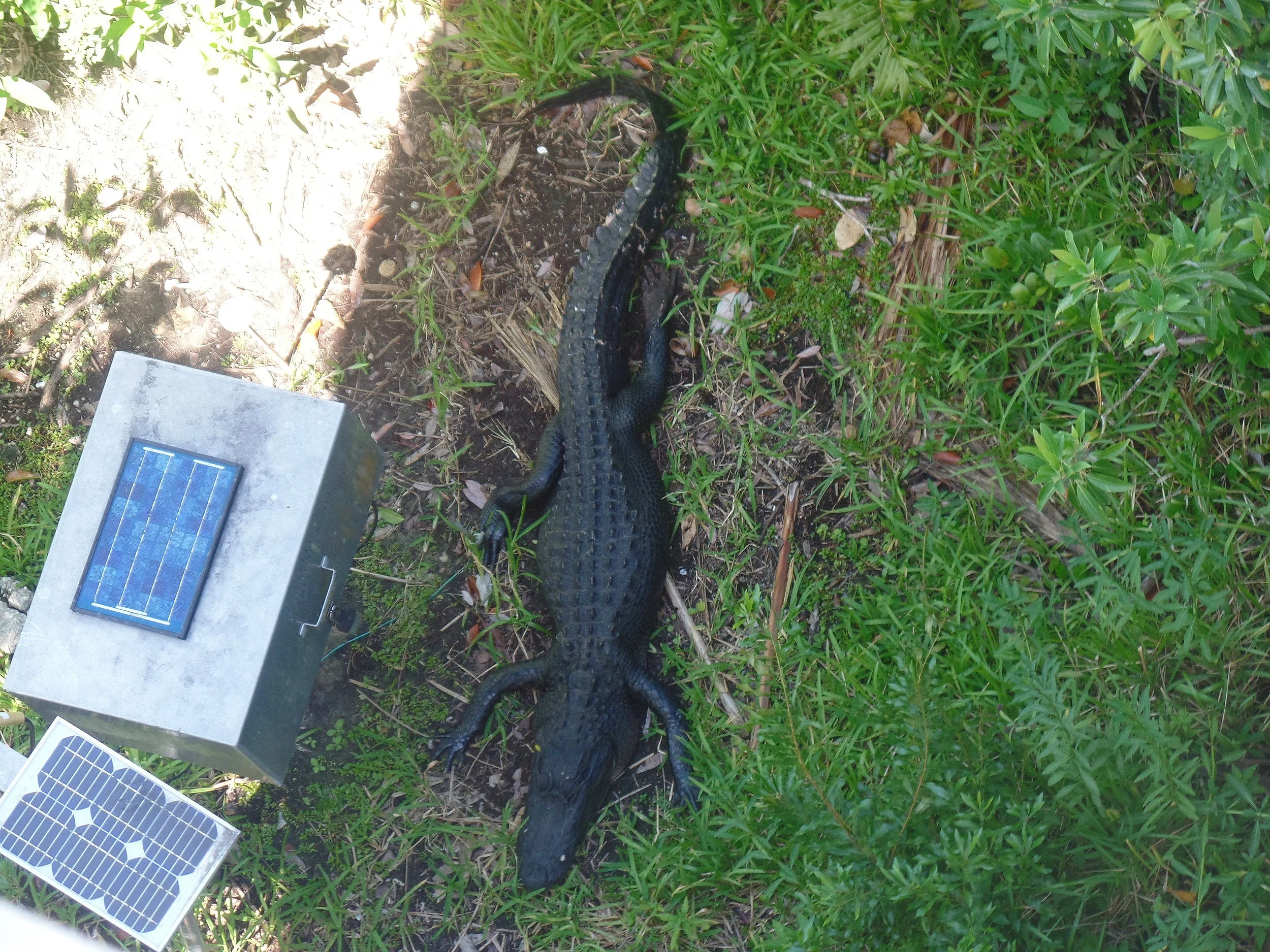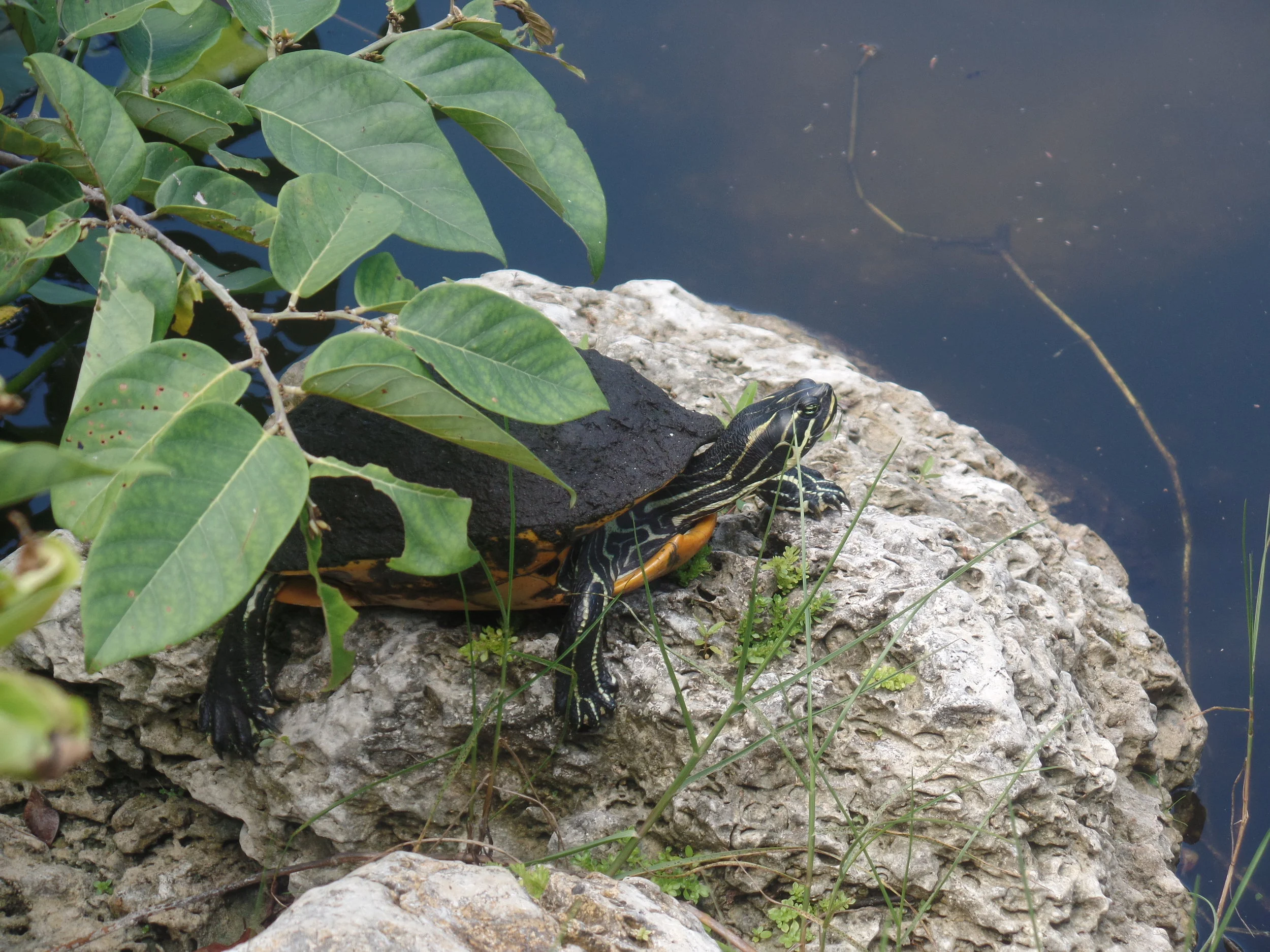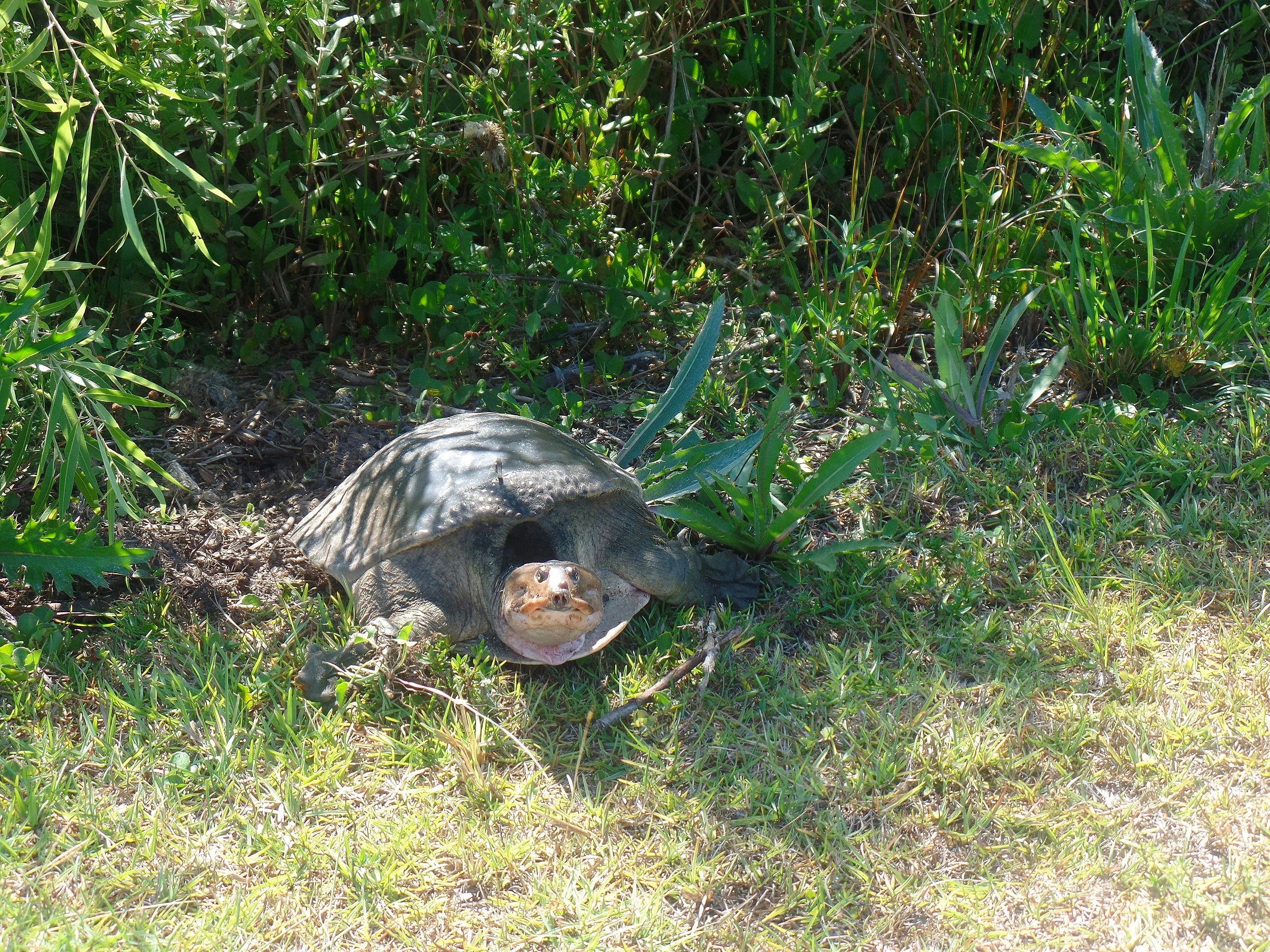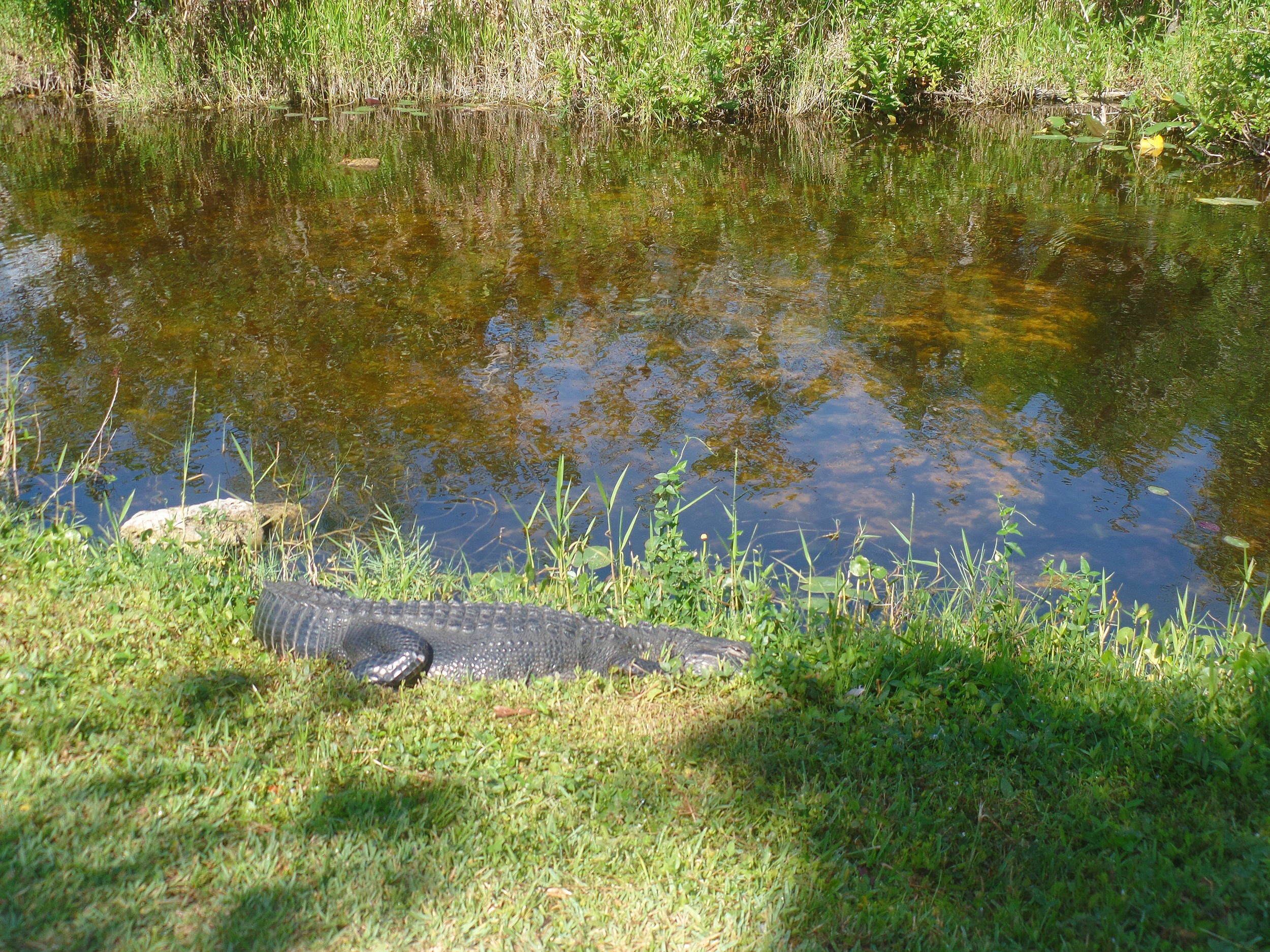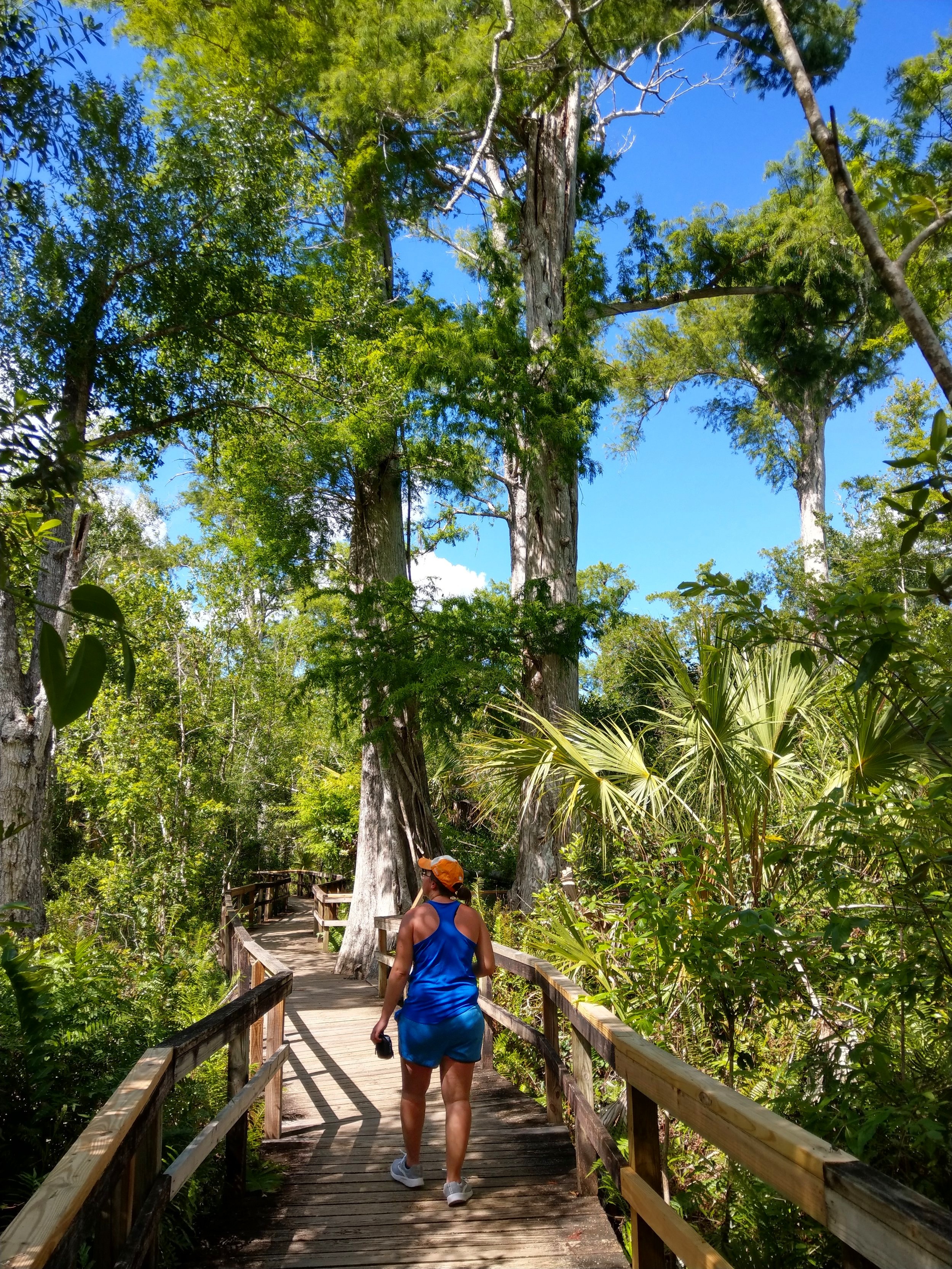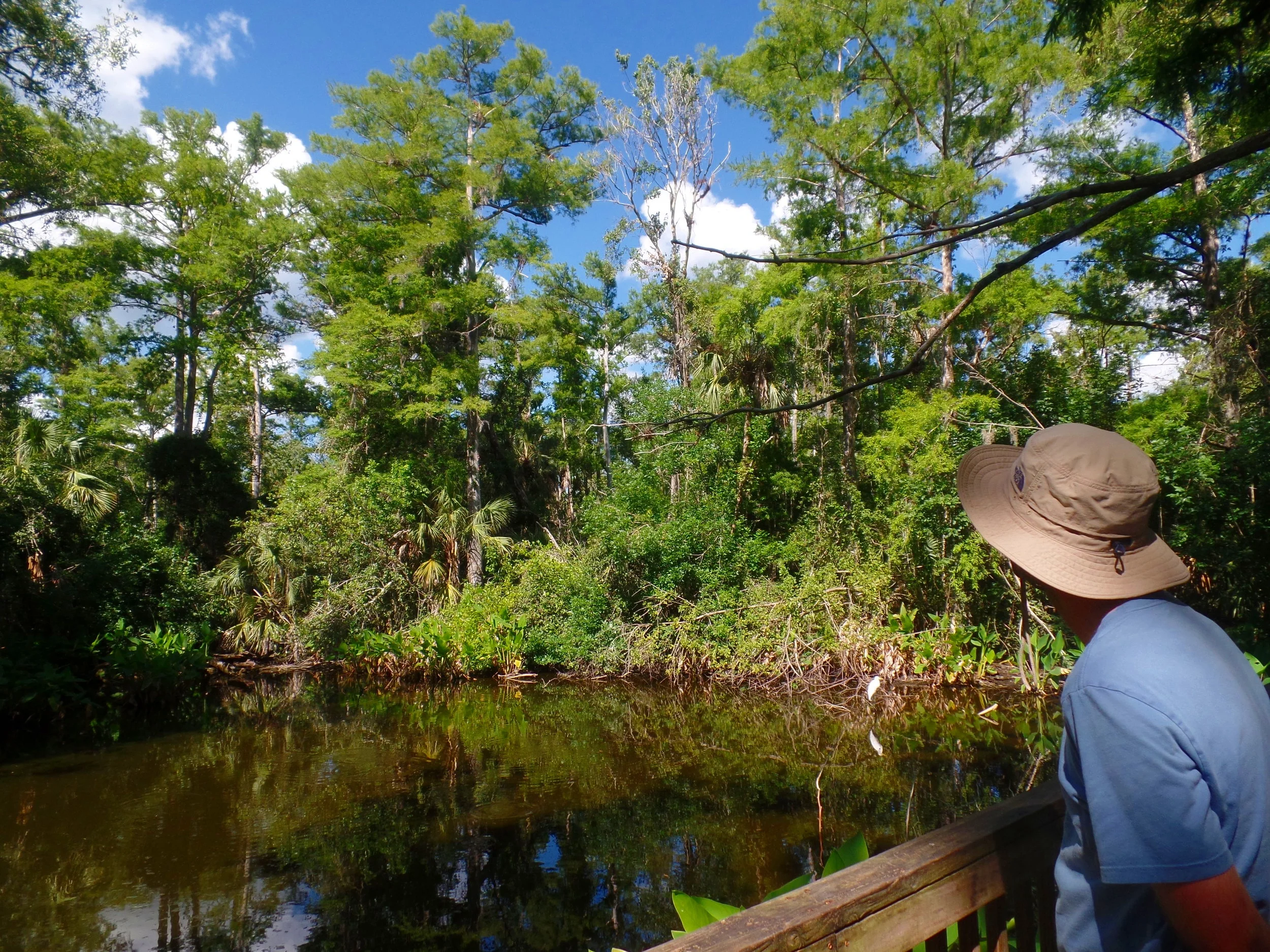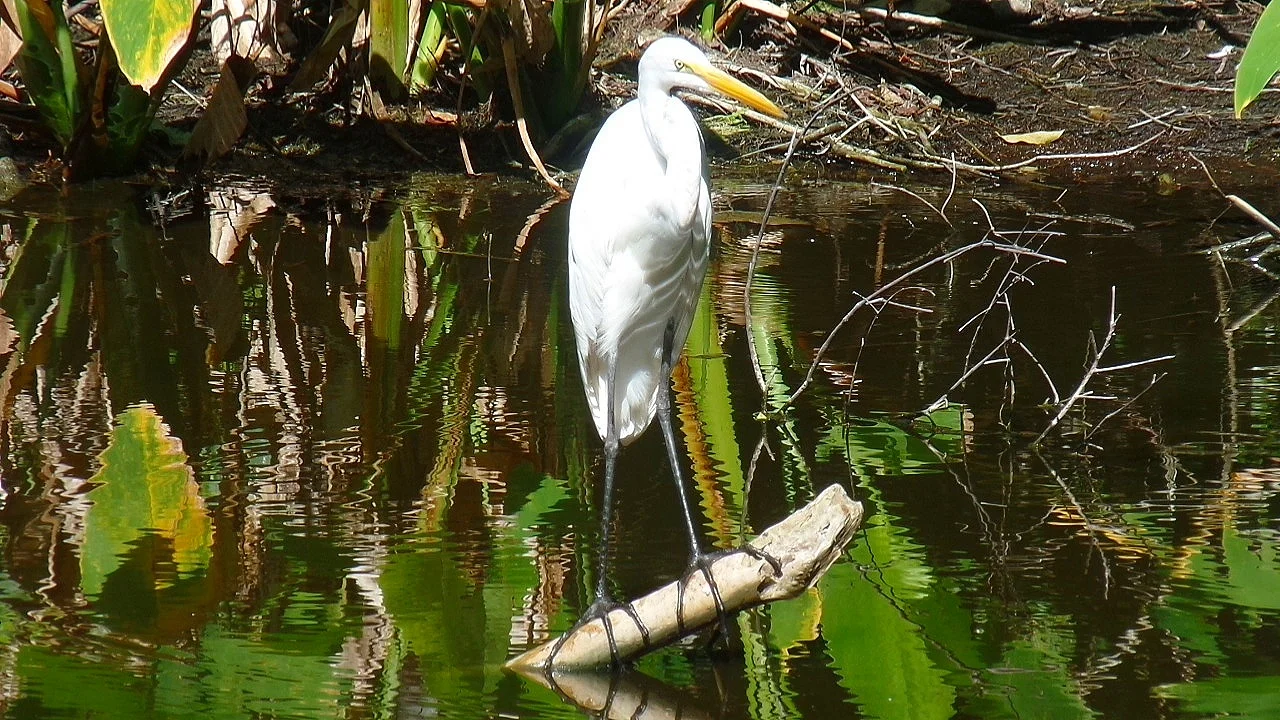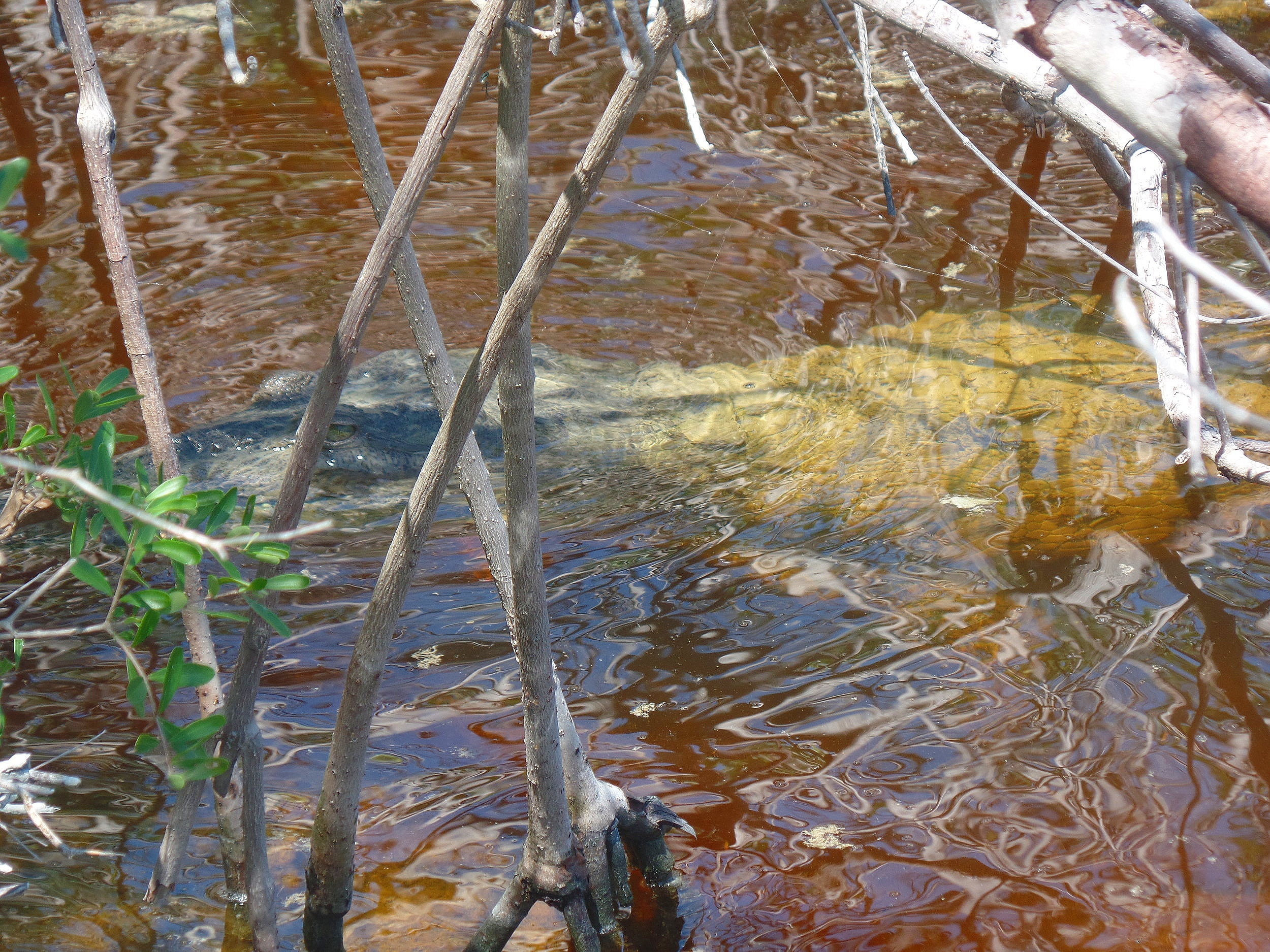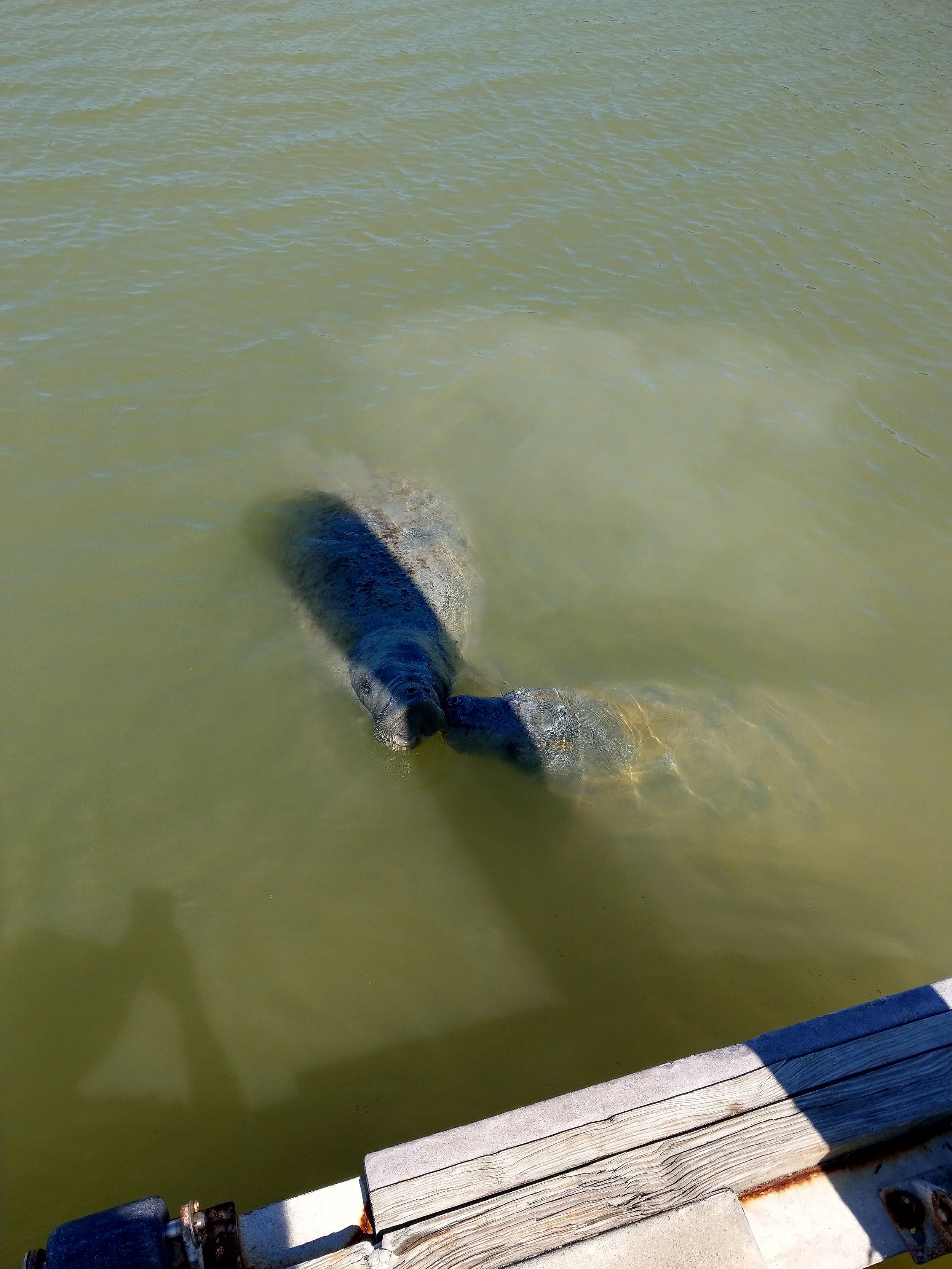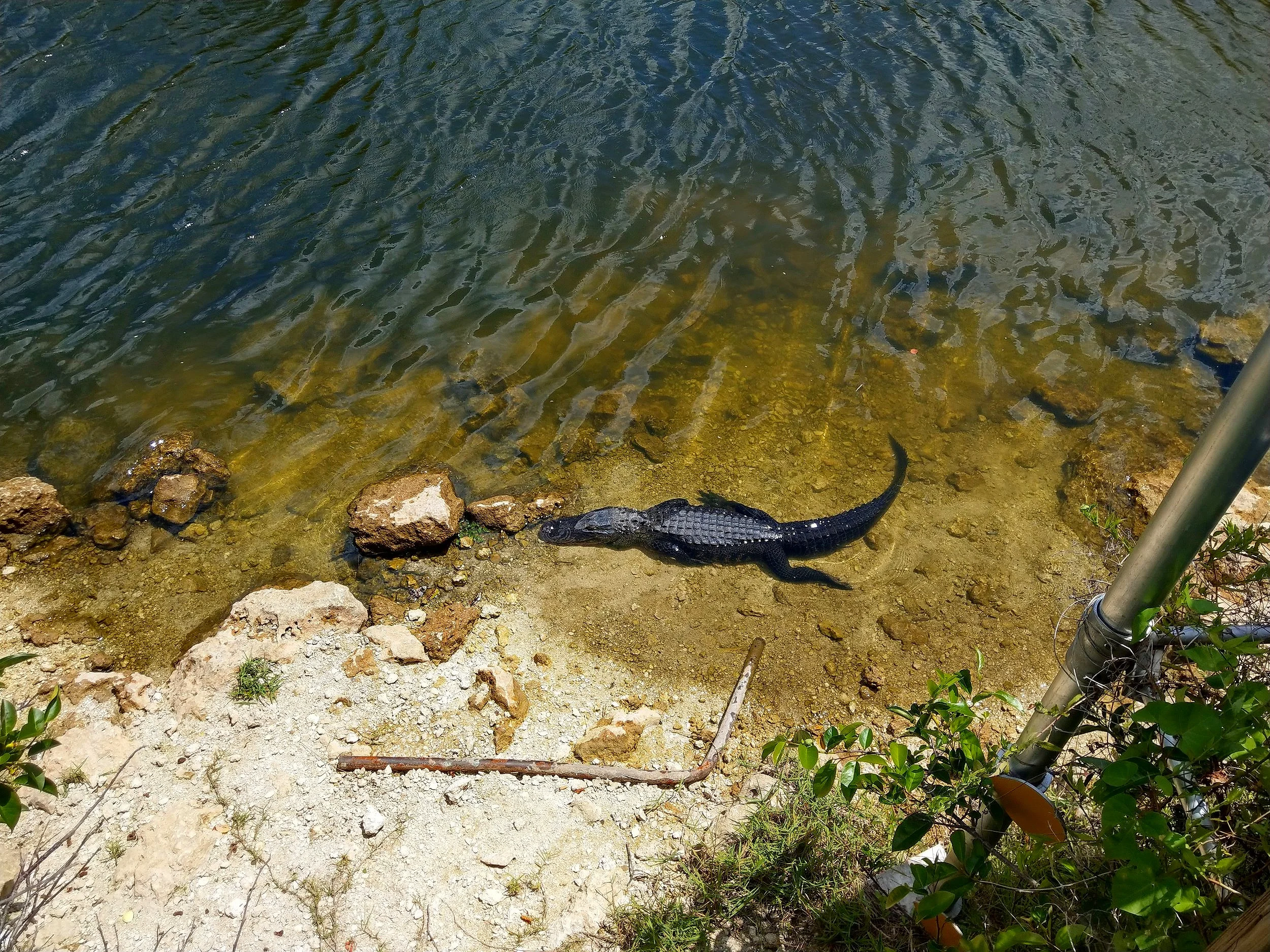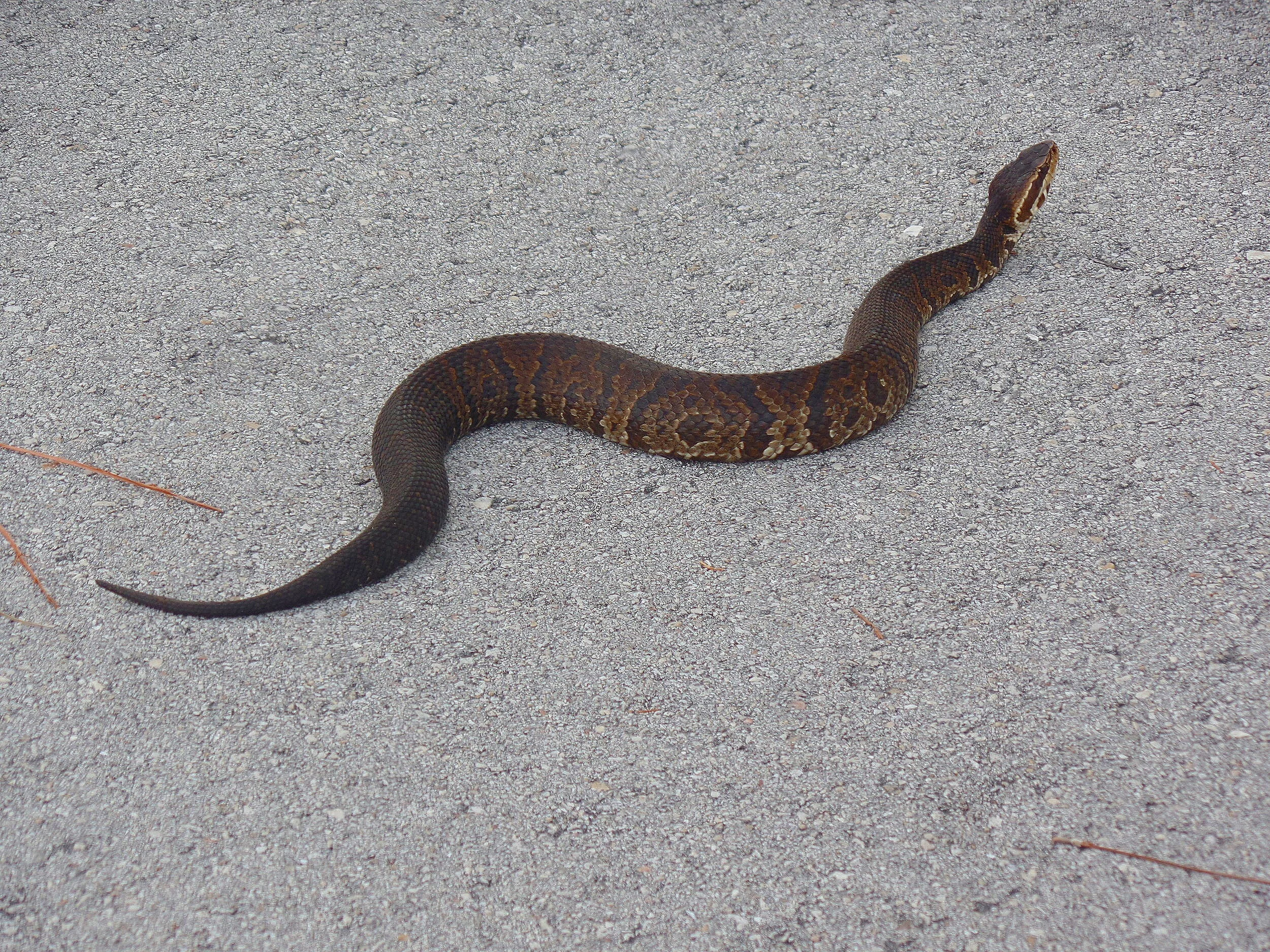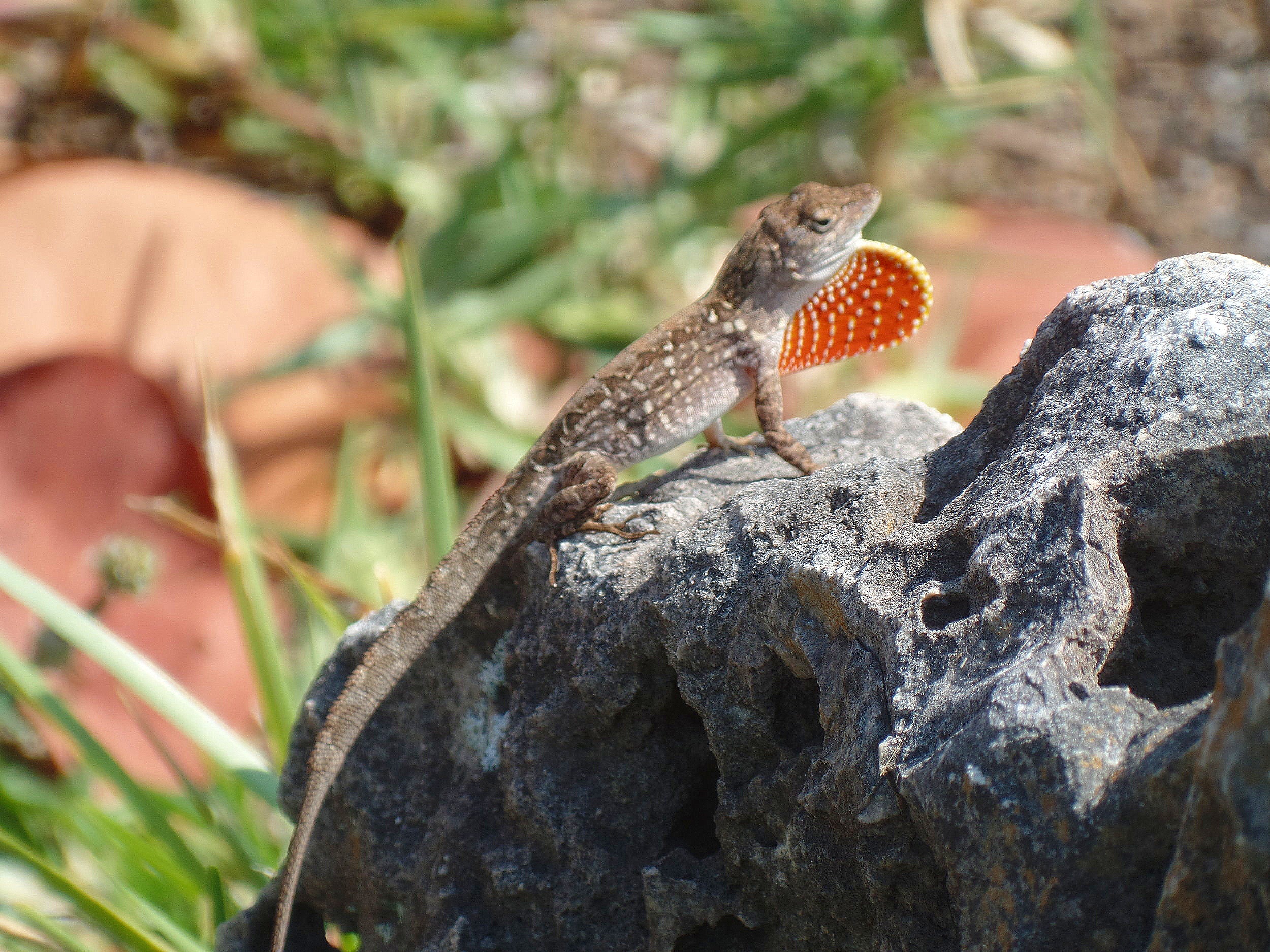The Best Places to See Wildlife in Everglades National Park and Beyond (a.k.a. where to find those alligators!)
How did that Wizard of Oz song go again? Gators and turtles and snakes, oh my! Yea, that’s definitely what is was. Nailed it.
While there is so much natural history to learn about and a blending of ecosystems to explore, the wildlife is a major attraction for those coming to southern Florida. Whether you’re an avid birder or just looking to spot your first wild alligator, southern Florida is the place to be, particularly in Everglades National Park. People flock here to see the literally hundreds of species of birds (see what we did there?), but the park is home to so much more.
The best part is that most of this wildlife is actually not very hard to find - if you know where to look. In fact, the Everglades had THE most abundant wildlife we have ever seen of any of the National Parks we have been to! Within our first hour in the Everglades, we saw dozens of alligators, birds, turtles and lizards, all just hanging out in their natural habitats. And while the Everglades are a great starting point, Southern Florida is filled with other preserves and state parks that each offer their own sets of trails and observation points to make sure you get an up-close view of all the awesome wildlife that calls Florida its home.
To make sure you have a similar experience, we’ve made a list of the best places to see wildlife in not just the Everglades, but in some of the other nearby parks and preserves. These are the places that we had the most luck, ordered from the best to worst (relatively speaking…they were all great!) places for wildlife viewing, and want to share how to get to them and what to do to increase your chances!
1. The Anhinga Trail
If you’ve done some research on the Everglades, and have read our article on the best things to do in Everglades National Park, it probably won’t surprise you that the Anhinga Trail made the top of our list for best places to see wildlife in the park. This was our first stop during our trip through Southern Florida, and we were not disappointed! As soon as we left our car and walked over to the small pond adjacent to the parking lot, we saw our first alligator and were super excited! Goal accomplished in the first ten minutes of our trip! Woohoo! By the time we left this trail, we saw so many alligators here that by the last few we were like, “Oh, yea, cool, another alligator…moving on…”.
How To Get There: The Anhinga Trail is located in Royal Palm, just a few miles past the Ernest F. Coe Visitor Center in Homestead. Driving down the main park road from the park entrance, you’ll make a left turn that ends in a parking lot for this trail.
How to See Wildlife: Just beyond the parking lot is a small pond where alligators are commonly spotted lurking through the water. The Anhinga Trail wraps around the lake and follows about a mile of easy boardwalk that weaves and loops around the marshy landscape.
What You’ll See: Alligators. Lots of alligators. It’s kind of fun to see how many you can spot, especially the hidden ones that are just barely poking their heads above the water. Along the way, we saw turtles, cute little lizards, and plenty of birds.
At one point, I was leaning against the rail when this little guy peeked around from the bottom and made me take a little (or big) jump back…these guys are everywhere! So you’ll get used to seeing them around. This guy, I later learned, is the lubber grasshopper. They’re pretty slow moving…they kind of just walk around. Come to think of it, I never really saw them hop at all! So they are pretty benign. But, their bright colors are meant to warn other animals not to eat them because they’re toxic. So, just don’t eat the grasshoppers and you should be just fine here.
As you might suspect by the name, you’ll also see a lot of anhingas. What is that? We had the same question! You’ll see them all over…in the trees, in the water, sunning themselves along the trail… You’ll be able to spot them if you remember their nickname as the piano bird. When they fan out their wings, the black and white feathers are reminiscent of the black and white keys of the piano. After we learned that (at an awesome ranger talk about birds that we attended), we spotted them no problem! Another fun fact, they’re also called Snake Birds. When they swim, only their necks pop up above the surface, looking like a snake sticking its head out.
Overall, the Anhinga Trail is THE best trail to go to in the Everglades to see wildlife. It’s location along the Main Park Road just past the main visitor entrance makes it easy to get to, and the sheer amount of wildlife you’re likely to see is more than I thought I’d see throughout my entire time in Florida.
2. Shark Valley
Shark Valley is a very close second for spotting wildlife in the Everglades, especially gators. This section of the park is sometimes referred to as the “True Everglades”, a sawgrass freshwater marsh that stretches off into the horizon in all directions. Exploration of this area is limited to the Shark Valley Tram Road (and some of its short spur trails), but this provides an excellent opportunity to see a ton of wildlife.
How To Get There: The Shark Valley entrance to the Everglades is located off of US 41, less than an hour from Miami. Driving west on US 41, you’ll see the left-hand turn for the park entrance, a road that will end at the parking lot for the Shark Valley Visitor Center and Shark Valley Tram Tour operators.
How to See Wildlife: To see some wildlife, you’ll have to venture out on to the Tram Road. This is a paved, completely flat, 15-mile road that loops through the sawgrass habitat. Almost half way around the loop, at mile 7, is the observation tower. You can go out to the tower and back the way you came, making a 14-mile journey, or you can continue on and complete the 15-mile loop.
You can explore this area by walking, biking, or taking a tram tour. Choosing to walk just a bit up and down the Tram Road is an option (you can indeed walk the entire thing if you are feeling super motivated! But we would recommend just biking or doing the tram at that point…remember, it’s 15 miles!). You’re likely to see some wildlife by walking even just a mile out and back…when we were there, a gator was lounging on the grass and sunbathing right at the very start of the path! They’re all along the trail…the further you go, the more you’ll see. But if you’re walking and not intending on doing 15 miles, you won’t make it out to the observation tower, and we highly recommending going out to the tower. It’s a great spot to hang out and try to spot different wildlife.
The tram tours cost $25 and can be reserved in advance, which is recommended. They take two hours and travel the entire loop road with a guide, stopping to let visitors climb the observation tower at the halfway point.
We chose to bike Shark Valley and highly recommend it! Bike rentals are done through the Tram Tour company right near the Visitor Center and cost $9 per hour. Expect to take at least 2 hours to bike the entire loop, but if you want to make lots of stops to observe or photograph the wildlife, expect closer to three hours. The great thing about biking is you can take as long as you wish, stop when you’d like, and it’s a very easy flat path so the ride is not strenuous at all (except if it’s a particularly windy day… see more about biking the Shark Valley Tram Road here).
What You’ll See: The first half of the Tram Road is a straight path that follows a narrow waterway filled with gators, turtles, and birds hunting for their next meal. It’s fun to see how many you spot as you cruise by. Be cautious, as some gators are lounging along the banks right next to the path, so be sure to keep your distance! At the observation tower, you’ll see more of the same. The tower sits above a large watering hole where lots of wildlife likes to congregate. We spotted at least 8 gators from the tower!
3. Big Cypress Bend
Just shy of 50 miles west of Shark Valley is another one of our favorite spots to see some Florida wildlife. This one, though, isn’t in the Everglades. Instead, it’s in the Fakahatchee Strand State Preserve, Florida’s largest state park. This park lies adjacent to the Everglades but has its own unique collection of plant life and wildlife, including the panther, deer, and black bears, but also more of our reptilian friends – the gators, turtles, and snakes.
How To Get There: Continue west on US 41 from Shark Valley and continue about 47 miles. You’ll see a sign for Big Cypress Bend with a small parking lot and gift shop on the right hand side of the road. The boardwalk starts behind this gift shop.
What You’ll See: This is another short flat walk that ends in a viewing platform that overlooks a small pond. At this viewing platform, we watched a gator as it stalked prey (and when the gator finally makes it’s move, it will scare the heck out of you, trust us!). We had lizards fall out of trees. We saw anhingas and egrets. We saw a couple of different snakes, one that terrified me because we thought it was the venomous Cottonmouth. We later looked it up and realized it was the nonvenomous Florida Water Snake (but don’t worry, we encountered the Cottonmouth earlier on our trip and again didn’t realize it until we looked it up days later!...we really need to get a stronger snake game). We also saw an amusing lizard mating ritual along the boardwalk. After patiently trying to wait out their little dance moves, we had to break it up. But we are hoping true love brought them back together…Oh, and lots of those giant grasshoppers for good measure.
While this trail is a bit further out of the way, this makes for a great place to stop and stretch your legs if you were heading from the Everglades out to the gulf coast.
4. The Flamingo Marina
A lot of the spots on this list are aimed at gators and birds, but the marina in Flamingo has some different residents!
How to Get There: Flamingo is the southernmost point of the mainland of Florida. It lies 38 miles down the Main Park Road after passing through the Homestead park entrance. The Main Park Road ends at the Flamingo Visitor Center and Flamingo Marina parking lots.
How to See Wildlife and What You’ll See: This is an easy one. Just walk over to the marina! Often times, manatees like to hang out by the docks in the marina. We lucked out and saw a group of three just slowing bobbing through the water. Even though these guys just kind of float along, I could probably sit there and watch them for hours, which I probably would have done if Kevin wasn’t there to move me along…
If you’re lucky, since you’re in salt water territory in Flamingo, you might also see some crocodiles. These massive monsters can sometimes be seen hanging out in or near the marina.
TIP: An adventurous way to explore the Everglades and possibly see some more wildlife in this area is to take a canoe trip. You can rent canoes from the park concessioner at the marina for just $20 for two hours. From here, you can journey up the Buttonwood Canal, where crocodiles are often sighted sunning themselves along the banks.
We paddled up the canal and, admittedly, were a little bummed out…we had only seen one tiny crocodile head peeking out close to shore during the entire trip. Don’t get me wrong, it was still a nice paddle along the mangroves, but we were on the hunt for crocodiles! When we got back to the marina, we noticed a few people taking pictures of something in the water along right next to the boat launch. I race over and lo and behold, this guy was just hanging out!
We laughed that we paddled all that way to hunt for crocodiles when they were hanging out back at the marina the whole time!
By the way, even though we didn’t see too much wildlife during our canoe trip, we still highly recommend taking a paddle trip in the Everglades! It’s an awesome way to experience the habitat, and there are a lot of great options for canoeing through narrow mangrove channels or out in the Florida Bay.
5. Oasis Visitor Center (Big Cypress National Preserve)
This is another place outside of the Everglades, but only 20 miles west of Shark Valley on US 41 (and on the way to Fakahatchee Strand). We included this on our list because this is another great place to spot alligators. The visitor center has a boardwalk that follows a narrow roadside stream. We spotted another dozen gators here in a short ten minute leisurely stroll!
BONUS: The Florida Reef
Okay, this might not be alligators (which is a good thing because, I don’t know about you, but I don’t want to be swimming around in the water where alligators are lurking), but it’s still another great way to get very up close to some of Florida’s unique wildlife…by getting into the water! Just a few miles off the coast of the entire length of the keys is the Florida Reef system, the third largest coral reef in the world. As close as an hour’s drive away from the Everglades, you can hop on a guided snorkel tour in the Florida Keys and immerse yourself in an underwater world full of colorful coral and tropical fish, and, if you’re lucky, you might see some sea turtles or nurse sharks. While you’re visiting the Everglades, consider making a trip down to the keys and do a little bit more exploring for a different side of Florida’s wildlife. How many other places can you be in a jungle-like swamp full of gators at one moment, and then an hour later be swimming in clear turquoise waters as yellow and purple fish swim past you?
General tips for seeing the wildlife in Florida’s parks:
Consider the time of year you visit. The dry winter months (November to April) are the best time to go to the Everglades for a few reasons (namely, cooler temperatures, less bugs, and less rain), but another reason is because the wildlife tends to be more active and easier to spot during this time. When it’s dry and the water levels are low, gators and birds will congregate around any available water sources, such as the pond along the Anhinga Trail, and the creek running through Shark Valley. Also, specific types of migratory birds are only found in the Everglades in certain months of the year.
Have patience and take it slow. As your walking down the interpretive trails and boardwalks, take your time and look around. It’s easy to miss things if you’re flying through. So many times I would miss an alligator’s head poking out of the water, or a turtle swimming by, because I was simply going too fast. Even if you don’t see anything right away, if you hang out somewhere long enough, such as the viewing platform at Big Cypress Bend, you’re bound to see something swim through or fly through or have a lizard fall out of a tree next to you. Just be patient.
Bring some binoculars so you can really get a close-up view of the wildlife, even if they’re a bit further away.
Attend a ranger talk. They offer a ton of programs each day in each area of the park. We sat in on a bird talk in Shark Valley, where the ranger pointed out different birds to us, taught us fun facts, and passed around replicas of claws and feathers from various species.
Make sure to wear sunscreen and bring a hat and sunglasses. That Florida sun and heat are no joke, and many places, like the Anhinga Trail and the Shark Valley Tram Road have no shade.
Keep your eyes out everywhere you go! This is a list of the places where we saw the most wildlife and where you’re likely to see it, too, but it’s really everywhere. Driving along US 41, for example, we spotted several gators along side the road, sunning themselves along a small road side canal. Or check out this snake (yea…this is the cottonmouth) in our campground in the Everglades (glad I didn’t know what this actually was or I might have not slept that night…).
We’re sure you know this, but fan boats are a huge tourist attraction in the Everglades. If you drive down US 41, there are no shortage of fan boat operators that you can easily hop on. Before deciding on which to choose, if the fan boat thing is more your speed (no pun intended. Ok, yes it was), always just be sure to do your research. Some places have gator encounters and demonstrations that are included in the fan boat tour ticket. Try to determine where the alligators are from, and which places are certified by the Florida Society for Ethical Tourism, like this fan boat tour operator. What do the operators do to reduce their impact? Do they feed the alligators to guarantee sightings during tours? Honestly, while a fan boat might be one of those iconic “must-do” things in Florida, this list proves that you don’t necessarily need to spend your money on a tour to see the gators up close and in their natural habitat!
Hopefully you are now equipped with your gator tracking plans and that this guide helped in some way! Honestly, every part of the Everglades is teeming with wildlife if you look carefully enough, but these spots seemed to be hotspots for easy viewing.
Drop us a comment below if you have any questions or if you’d like to share any experiences you’ve had in these or other places with wildlife viewing in the Florida parks!

